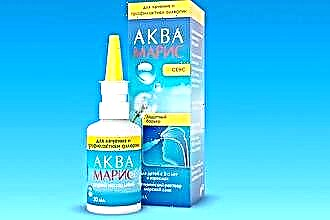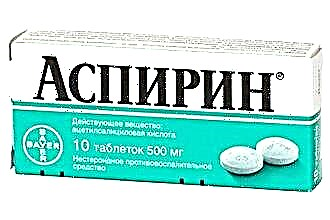 Normally, the surface of the mucous membrane of the oropharynx is smooth, even, pale pink in color. If bumps, folds, growths, etc. appear on it, they say that the child has a “loose throat”. Of course, "loose throat in a child" is not a diagnosis, or even a medical term. But at the same time, loosening of the lymphadenoid tissue is an important sign that must be considered when making a diagnosis and prescribing treatment. Loosening can accompany some inflammatory diseases of the pharynx and tonsils, which we will discuss in detail in this article.
Normally, the surface of the mucous membrane of the oropharynx is smooth, even, pale pink in color. If bumps, folds, growths, etc. appear on it, they say that the child has a “loose throat”. Of course, "loose throat in a child" is not a diagnosis, or even a medical term. But at the same time, loosening of the lymphadenoid tissue is an important sign that must be considered when making a diagnosis and prescribing treatment. Loosening can accompany some inflammatory diseases of the pharynx and tonsils, which we will discuss in detail in this article.
When do children with a loosened throat need treatment? How to determine the cause of the disease and choose an effective therapy? Read about all this below.
When a loose throat is not a cause for concern
The appearance of bumps on the surface of the mucous membrane is often observed in childhood. The reasons for this may be hypothermia, acquaintance with new viruses and bacteria, the use of spices and other allergenic foods, breathing polluted air, etc. In such cases, mild redness and follicular hypertrophy are signs of immune responses in the tonsil tissue. The fact is that the tonsils are an immune organ. They constantly come into contact with food, water, air, reacting to potentially hazardous components. Every second, many microorganisms enter the child's oral cavity, but due to the protective function of the tonsils, they do not harm health.
Since the child's body is just developing, and his immune system first encounters many microbes, the tonsils can often look lumpy.
If at the same time there are no signs of illness (discomfort when swallowing, perspiration, fever, plaque on the tonsils, etc.), do not worry. To make sure that everything is in order with the child, contact a specialist - an in-person examination will show whether any treatment is required in your case.
Loose red throat - a sign of acute respiratory infections
Redness, along with swelling, pain, and mucus formation, are classic signs of inflammation. A red, loose throat is a typical manifestation of an acute inflammatory reaction in the upper respiratory tract. Acute respiratory infections (i.e. acute respiratory infections) that affect the throat area include:
- tonsillitis - inflammation of the pharyngeal tonsils;
- pharyngitis - inflammation of the pharyngeal mucosa;
- laryngitis is an inflammation of the larynx.
With tonsillitis, the infection is localized in the tonsils. The glands (or glands) become inflamed - they enlarge, redden, and become covered with plaque. If the tonsils are not enlarged, but the throat is red, especially the visible part of the back wall, pharyngitis occurs.
With laryngitis, the throat can be reddened and loose only if the pharynx is drawn into the infectious process. It is impossible to see an inflamed larynx when examining the throat, therefore the diagnosis of "laryngitis" is made on the basis of external symptoms, first of all, voice changes (hoarseness, wheezing).
Thus, a red throat with a loosened surface indicates acute inflammation of the tonsils or pharynx. The child has either tonsillitis or pharyngitis.
Acute pharyngitis
The red and loose back wall of the throat in a child is a clear sign of acute pharyngitis. Its symptoms:
- increased body temperature (37C and above);
- sore throat, may radiate to the ears;
- headache;
- swelling, loosening, redness of the visible part of the pharynx, suppuration, punctate hemorrhages are often formed;
- in children, pharyngitis is often accompanied by nasal congestion, runny nose, and cough.
The disease develops acutely, usually after hypothermia and contact with carriers of the infection (sick or infected children and adults). The causative agents of pharyngitis are ARVI viruses, as well as bacteria such as staphylococcus and streptococcus. Symptoms of viral and bacterial pharyngitis in children are similar, so an accurate diagnosis can only be made on the basis of laboratory tests. However, this is not always used - this is simply not necessary. If the child's condition is mild or moderate, first of all he needs treatment with local antiseptics. If necessary, anti-inflammatory drugs are also used. Overall, treatment  includes:
includes:
- gargling with herbal infusions, warm water with salt or soda;
- the use of sprays with antiseptic properties (Bioparox, Kameton, Ingalipt, Lugol) for irrigation of the oropharynx;
- resorption of lozenges and throat pills with antiseptic and analgesic effects, for example, Septolete, Strepsils and many others;
- with an increase in body temperature above 38.5C - antipyretic drugs, for example, paracetamol, ibuprofen.
Antibiotics for pharyngitis are used only in severe disease - suppuration, severe fever, which does not respond to the action of antipyretic drugs.
During treatment, children should adhere to bed rest. Patients need a plentiful warm drink, a balanced diet (fresh fruits and vegetables, soups, meat, eggs, dairy products).
Acute tonsillitis
Acute tonsillitis is an inflammation of the tonsils. Its symptoms:
- enlargement and redness of the tonsils, as well as the pharynx, soft palate and uvula;
- tuberosity of the mucous membrane of the glands caused by an increase in their follicles ("loose throat");
- Sharp sore throat that makes it difficult to swallow
- enlargement of the cervical lymph nodes;
- fever (in children, body temperature often reaches 39C);
- plaque formation on the tonsils in the form of dots, spots, films is possible.
Tonsillitis can be caused by viruses or bacteria. Acute tonsillitis caused by a bacterial infection is called a sore throat. Streptococcus is the most common bacterial pathogen. Streptococcal sore throat should be treated with antibiotics, and viral sore throat should be treated with  antiviral agents.
antiviral agents.
The doctor decides whether to include antibiotics in the treatment plan. You should not give up antibiotics if they are prescribed - untreated sore throat often gives complications to the heart, joints and kidneys.
In addition to antibiotics or antiviral drugs, treatment for tonsillitis should include antiseptic drugs for local therapy (rinsing and treating the tonsils). You can use the same drugs that are prescribed for pharyngitis. In addition, with tonsillitis with loosening of the tonsils, resorption of tablets is shown to restore the structure and functions of lymphadenoid tissue. These include the drug Tonsilotren.
Chronic inflammation is the cause of loosening of the mucous membrane
Chronic diseases of the upper respiratory tract are caused by low-grade infections that affect the tissues of the pharynx, tonsils and other organs. Chronic inflammation is often the result of improper treatment of acute respiratory diseases (tonsillitis, pharyngitis, etc.).
Chronic pharyngitis is a sluggish, periodically exacerbating inflammation of the pharyngeal mucosa. In chronic granular pharyngitis, changes in the structure of the mucous membrane are observed - its surface is covered with nodules, bumps, folds, necrotic areas are formed.
With chronic pharyngitis, the throat looks "loose", and the child may not complain of a sore throat or feeling unwell.
How to understand that a child has chronic pharyngitis:
- frequent coughing, especially in the morning (caused by the need to constantly cough up accumulated mucus);
- bad breath;
- the child may complain of dry throat;
- decreased appetite;
- moderate enlargement of the lymph nodes under the lower jaw, pain may also be observed when touching them;
- lethargy of the child, drowsiness, fatigue.
Loose tonsils in a child are often a sign of chronic hypertrophic tonsillitis. With chronic inflammation of the tonsils, pathological changes in lymphadenoid tissue occur - loosening, the formation of cicatricial adhesions and seals.
A change in the appearance of the lymphadenoid tissue of the tonsils is a characteristic manifestation of chronic tonsillitis.
In addition, the disease has the following symptoms:
- increased size of the tonsils;
- the presence of plugs or pus in the lacunae of the tonsils;
- frequent sore throats;
- permanently enlarged cervical lymph nodes.
With an exacerbation of chronic inflammation of the tonsils, symptoms characteristic of moderate angina are observed. Body temperature usually does not reach 39 C, sore throat is moderate.
Treatment of chronic inflammation is long-term, step-by-step. First of all, they destroy the infection, then relieve the inflammation. After that, measures are taken to restore the structural and functional integrity of the tissue and strengthen the immune system.
Chronic infections in childhood are rare, but if a child often suffers from sore throat, and his tonsils look loose and scarred, it is worth consulting with a specialist - perhaps you are faced with chronic inflammation.



